Sliding into Shape: How Slider Discs Can Help Runners Save Time and Get Strong
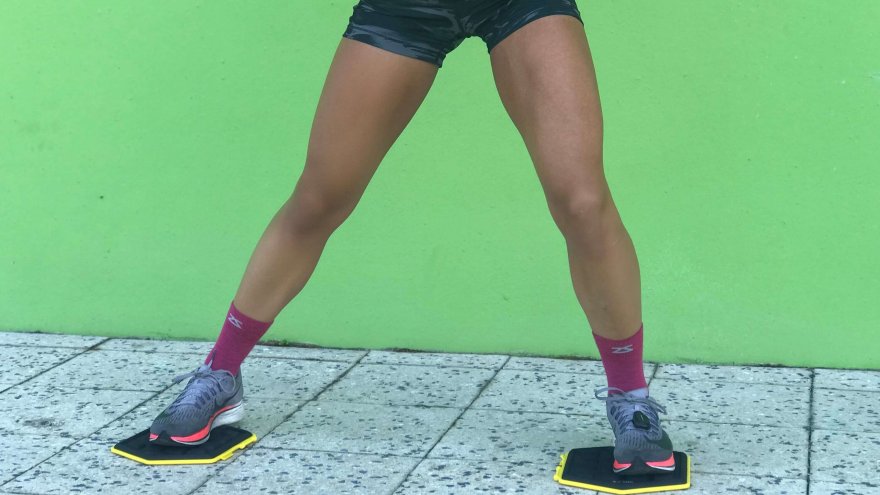
One of the top reasons people skip exercising is lack of time. Even if you can afford those expensive gym memberships, it takes extra time to get there and back home. If you have regular work hours, then you are stuck going to the gym at peak hours in the evening when everyone else is there, so your actual workout will most likely take more time since you probably will have to wait around for the machines and dumbbells you would like to use. Your best bet if you really want to get fit in less time is to find ways to exercise at home with as little equipment as possible. The standard light dumbbells and resistance bands are great choices, but with the use of gliding discs, also called sliders, you can work more body parts at once, saving even more time! They are an inexpensive option, but even without them you can create your own using two hand towels or paper plates.
Wake Up More Muscles
Using gliding discs may seem easy initially when beginning an exercise since the disc essentially helps you move through the motion. After just a few repetitions you will begin to feel the burn in many more places than performing the exercise the traditional way. For example, when using the discs for reverse lunges, the disc will assist one leg as it keeps contact with the floor behind the body until the front legs drops into the lunge. Since this motion requires more control, the stabilizing leg needs to work harder to keep balanced. Sliders are a great choice for all types of lunges, such as lateral and diagonal lunges, which are all important for runners, since they strengthen many of the knee and hip stabilizers that are in charge of protecting from overuse injuries.
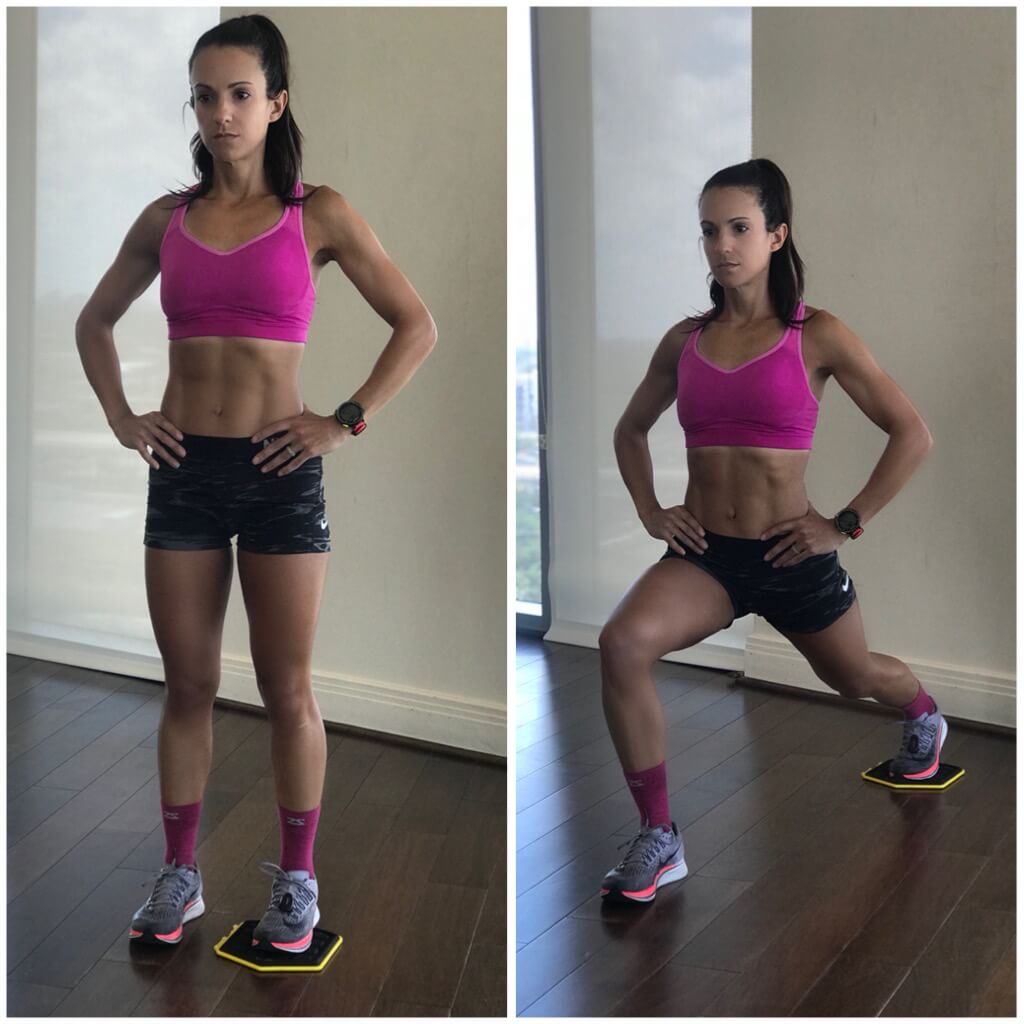
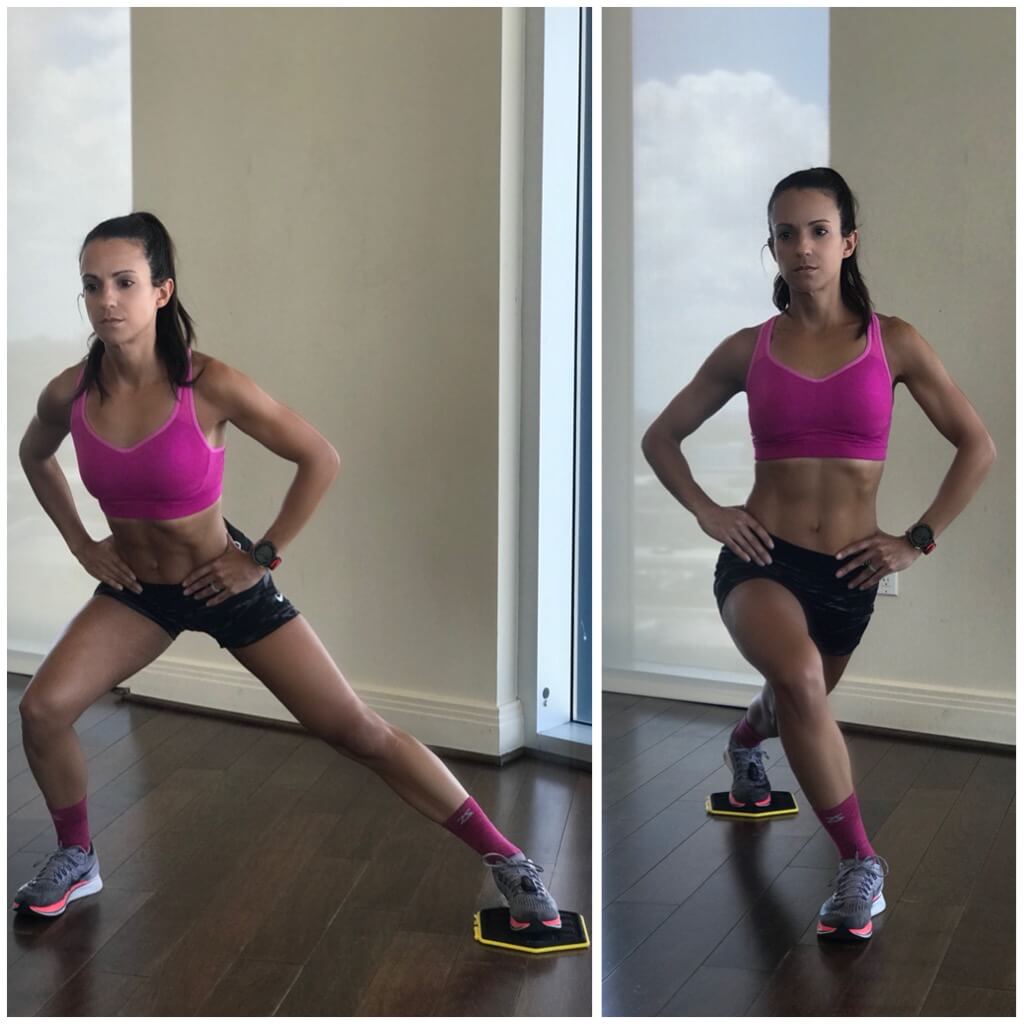
Work the Core Every Time
If you have read running articles regarding injury prevention or performance improvement, then you have probably come across the importance of core strength. It is what keeps the pelvis in a neutral position during the phases of running. It also maintains proper posture and helps prevent fatigue early on during runs. A strong core is required to keep the arms and legs moving in sync and with good stability, so as to expend less energy. Since running is basically an act of falling forward, the core is really what is in charge of controlling this action.
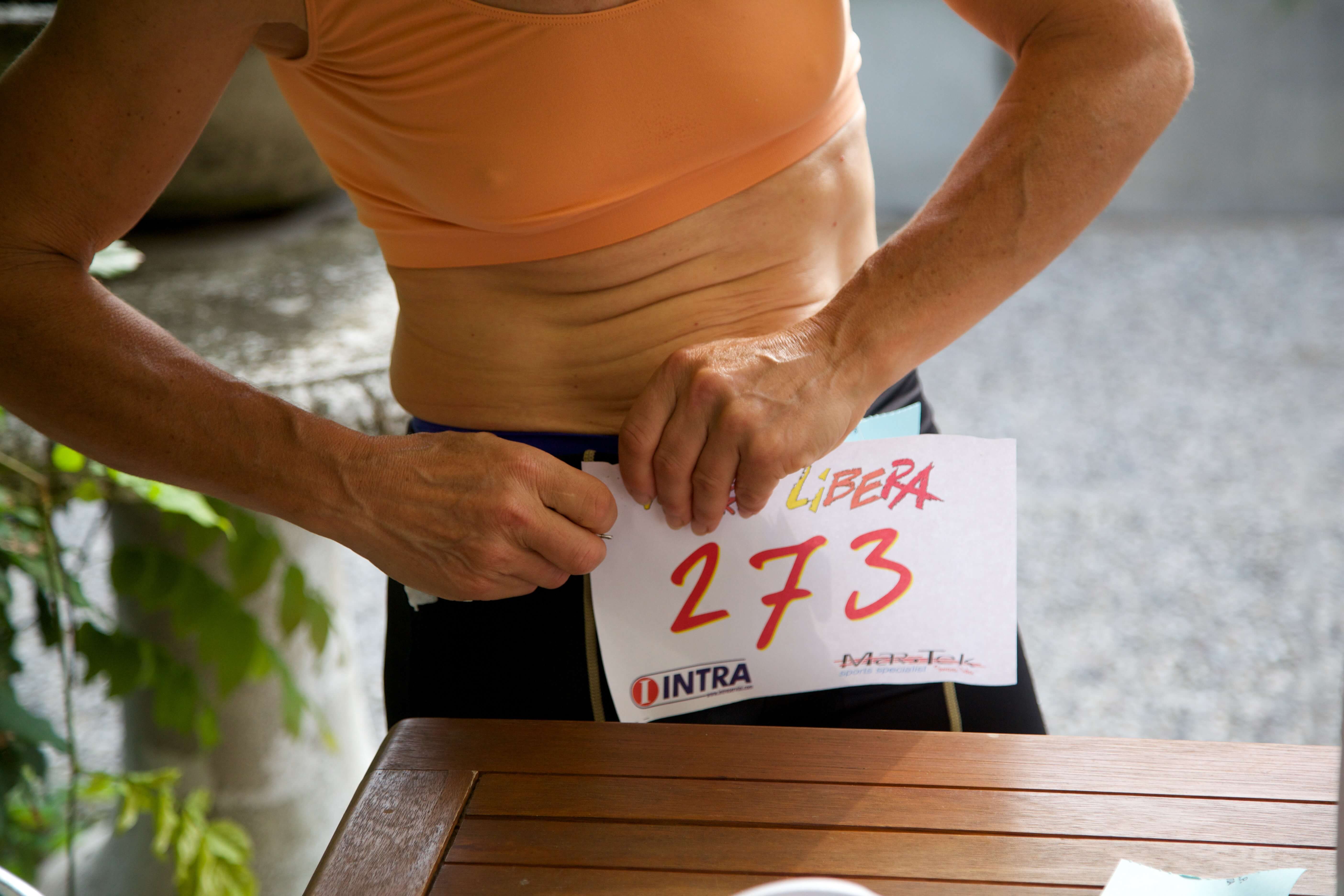
Not only do direct abdominal exercises strengthen the core muscles, but even the standing moves done with sliders engage these important muscle groups with every repetition. Any exercise that involves a challenge to balance is effectively a good core strengthener. Think of using a balance disc, foam mat, or Bosu—all will require the core to activate in order to keep from falling. The same concept applies to using the sliders. They create a slight instability since the disc will want to continue sliding during the movement. The abdominals and glute muscles will have to kick in to maintain the body’s balance while controlling the disc from sliding too far.
Simple to Advance
Even the easiest slider exercises are challenging enough. If you are a beginner, it is best to start off with small movements, until you feel you can safely control the entire range of motion without losing your balance. For example, with the lunges described above, slide the leg back only half way each time. Slow and controlled movements are the key to getting the most effective workout with the sliders, especially at the beginning. Once you feel you can control the motion better and the movements seem easier, then make your way towards the entire range of motion. A great way to advance from there, is to add some speed, being careful not to lose stability. Adding dumbbells or resistance bands at this point will also make the exercises much more challenging.
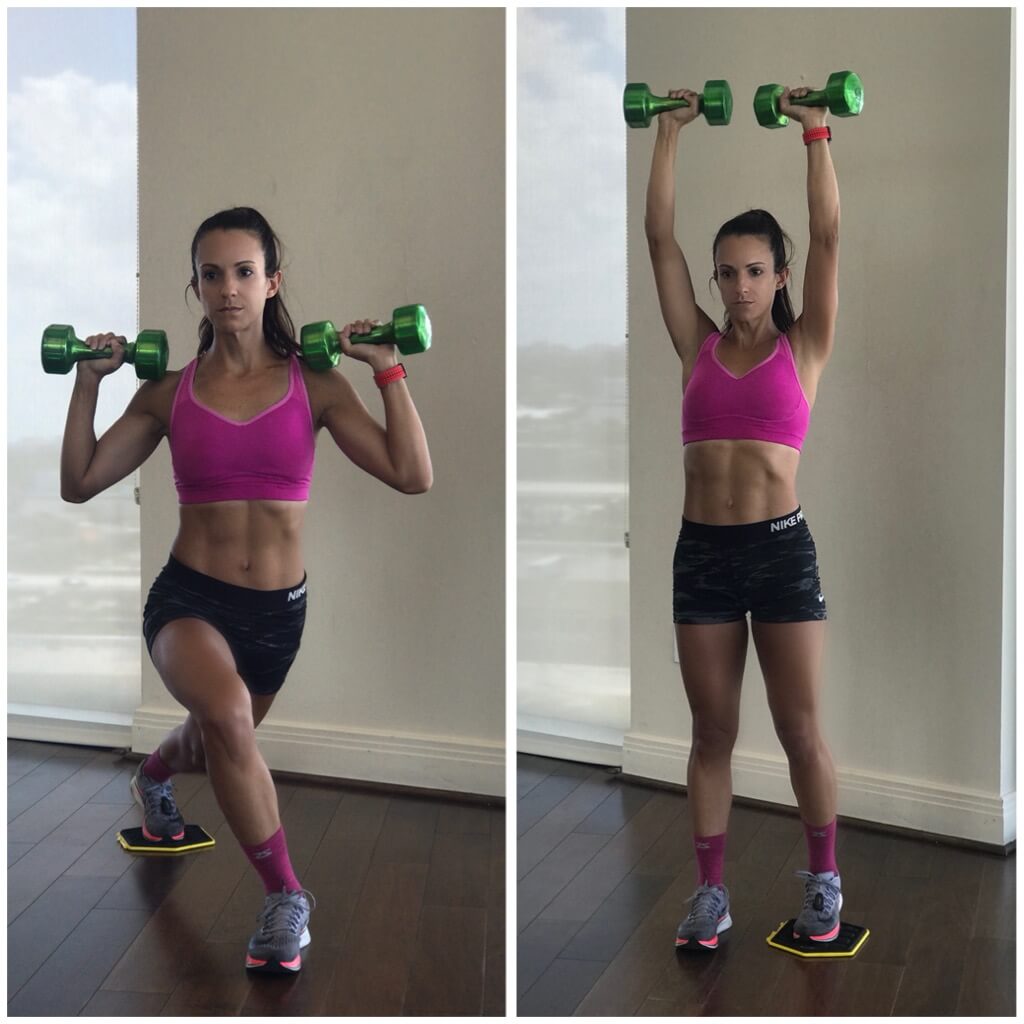
Several floor exercises can be performed using the gliding discs as well. The entire body can be worked all at once, or you can choose to perform isolated exercises. As shown below, double or single-leg glute bridges are a great alternative than the standard bridge. Variations of push-ups and planks using the sliders will also incorporate several core muscles as well.
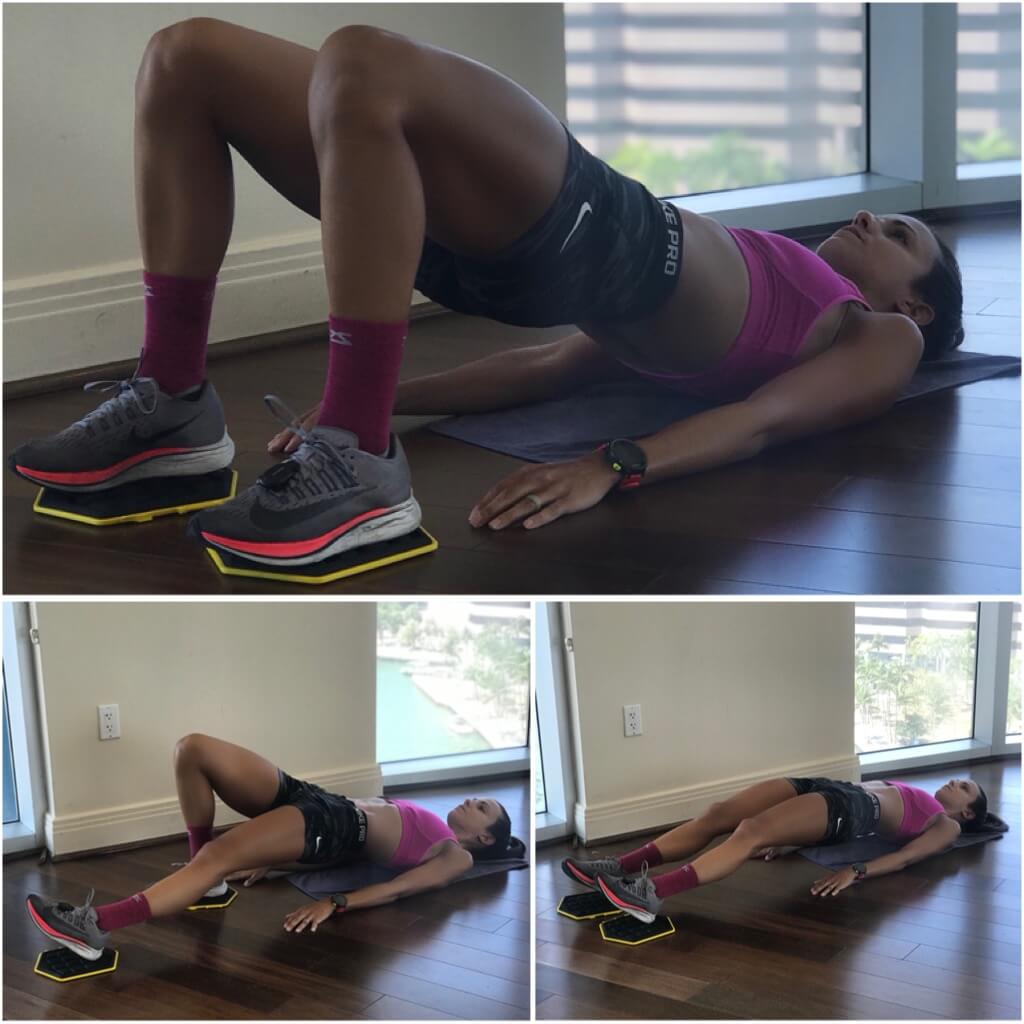
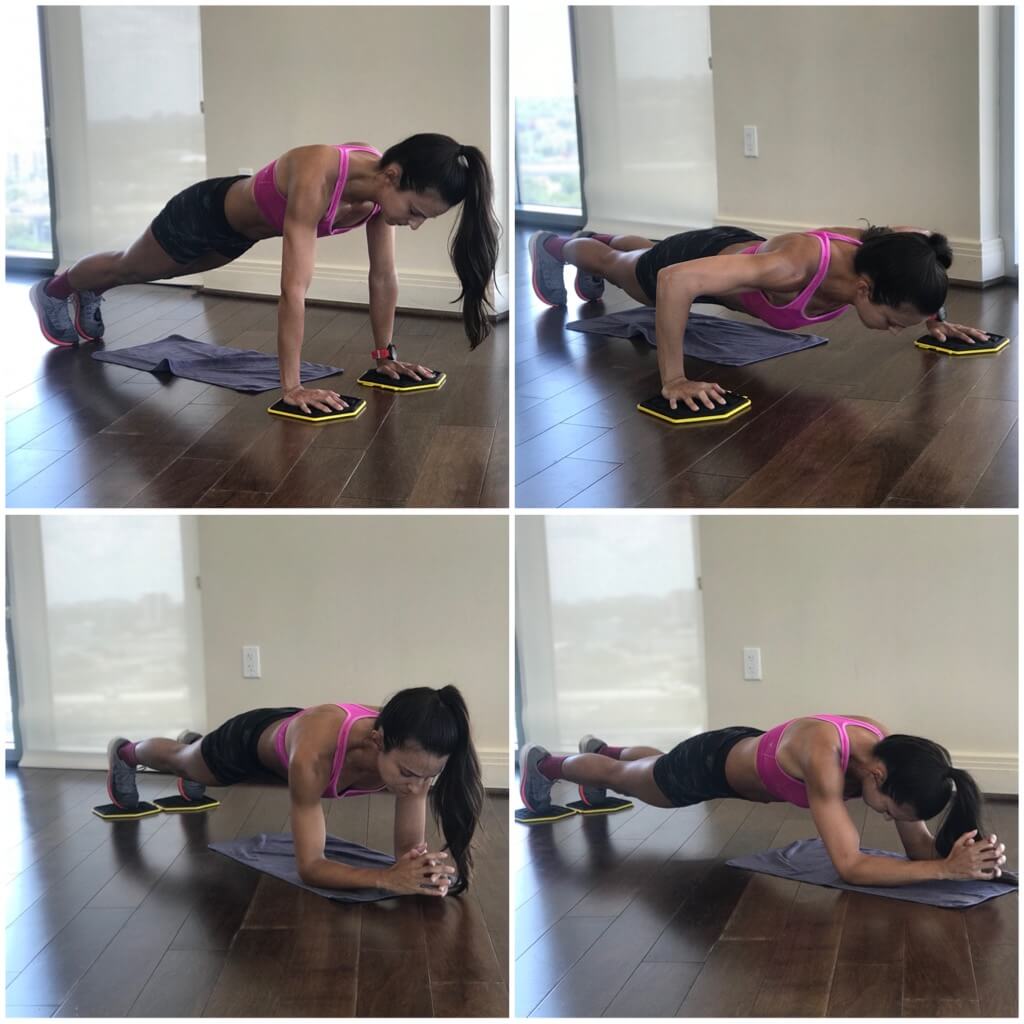
Training for a marathon requires more than just running most days of the week. The strengthening part of the plan is what keeps runners well balanced and with a low risk of injury. Most runners with regular full-time jobs, families and other obligations tend to skip the strengthening when they are short on time. This is where incorporating inexpensive equipment, such as gliding discs, can be useful. Even squeezing two or three moves using the sliders before or after a run can be enough to keep the muscles strong. It most definitely saves time as you will have to perform less exercises overall since the moves using the sliders work several body parts, if not all, at once. This reason alone should be convincing enough to never skip a strengthening session again.
Latest Articles
 Is Running on a Treadmill Easier Than Running Outside?Runners have their own preferences, whether it is treadmill running, running outside on the road, or exploring trails. So...
Is Running on a Treadmill Easier Than Running Outside?Runners have their own preferences, whether it is treadmill running, running outside on the road, or exploring trails. So... Is It OK to Use Trail Running Shoes on the Road?While trail running shoes can be used on roads, especially in situations where a runner encounters mixed terrains or pref...
Is It OK to Use Trail Running Shoes on the Road?While trail running shoes can be used on roads, especially in situations where a runner encounters mixed terrains or pref... How to Fix Sore Quads After Running?Rest, ice, gentle stretching, and over-the-counter pain relievers can help soothe sore quads after running. Also, ensure ...
How to Fix Sore Quads After Running?Rest, ice, gentle stretching, and over-the-counter pain relievers can help soothe sore quads after running. Also, ensure ... 10 Fruits With The Most Electrolytes to Replace Sports DrinksThese fruits are high in electrolytes such as potassium, magnesium, and calcium, essential for hydration, muscle function...
10 Fruits With The Most Electrolytes to Replace Sports DrinksThese fruits are high in electrolytes such as potassium, magnesium, and calcium, essential for hydration, muscle function...

